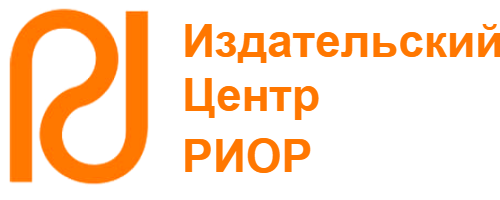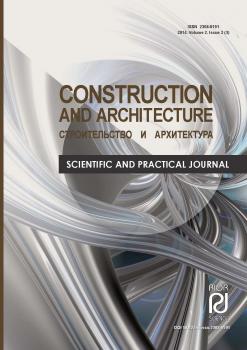from 01.01.2019 until now
Platov South-Russian State Polytechnic University (NPI) (Obscheinzhenernye discipliny, professor)
from 01.01.1980 to 01.01.2019
Moscow, Russian Federation
Russian Federation
The article describes the features of the transition to information modeling at the design stage, which lead to an increase in the number of digital information models. Quantitative and qualitative improvement of models entails an increase in the time spent by highly qualified labor resources. A method is proposed for sorting intersection collisions for their subsequent correction in order to rationalize the use of labor resources in design organizations, and the organization of work to improve the quality of digital information models, and design solutions in general. Thus, using the collision sorting method, assigning weights to elements, it is possible to increase the productivity of qualified engineers through the rational use of labor resources. The greatest number of collisions consist of the intersection of walls with walls, from this it can be concluded that the tool with which the walls are modeled is used incorrectly, there is probably a duplication of elements. The value of weak intersections in the future can be reduced, thereby the verification conditions will become tougher, there will be more intersection collisions, the quality of the CIM will increase after their correction. The values of the weights in this study are assigned based on the fact that the load-bearing elements have a higher priority. As further research, it is possible to determine the weights for most of the CIM elements in different types of capital construction projects by expert evaluation and make methodological recommendations.
improving labor productivity, intersection collisions, information modeling technologies
Введение
На рынке программного обеспечения представлено множество решений для проверки цифровых информационных моделей (далее ЦИМ) на коллизии пересечения, как зарубежные: Autodesk Navisworks, Solibri и др., так и отечественные: Pilot-BIM, Tangl Control, CADLib и др. Используя данные инструменты, можно повысить качество ЦИМ, а в следствии и качество проектных решений на стадии проектирования.
Исследователи сходятся во мнении о необходимости таких проверок как внутри одной дисциплины, так и между дисциплинами (внутридисциплинарные и междисциплинарные проверки) [1-8].
Также исследователи много внимание уделяют коллизиям пересечения инженерных сетей как друг с другом, так и с архитектурно-конструктивными элементами [9-13], коллизии пересечения конструктива и архитектуры в публикациях встречаются реже.
В зависимости от требований, проверки на коллизии пересечения выполняются с определённой периодичностью и определённым настройками. Одной из таких настроек является размер допустимых пересечений, например Московская государственная экспертиза устанавливает это значение в 80 мм [14]. Допустимые значения пересечений (слабые пересечения) уменьшают общее количество коллизий, но не избавляют от них полностью. Отсутствие сортировки коллизий пересечения предполагает исправление коллизий в произвольном порядке, что не является рациональным использованием ресурсов, порой некоторыми коллизиями можно пренебречь, а на исправление других коллизий уходит много времени, которое можно было бы потратить на более важные коллизии.
Цель данной статьи описать метод сортировки коллизий пересечения, который поможет более рационально использовать трудовые ресурсы квалифицированных инженеров на исправление найденных коллизий пересечения. Работа продолжает исследования, проводимые на кафедре ИСТАС НИУ МГСУ [15-23].
Методы исследований
В качестве ЦИМ была выбрана модель экономически эффективного проекта повторного применения — Дворец бракосочетаний, выполненная в Renga (Рис. 1 и Рис. 2). В модели осуществлено моделирование следующих разделов:
- Архитектурные решения;
- Конструктивные решения;
- Водоснабжение и канализация;
- Отопление вентиляция и кондиционирование;
- Силовая сеть;
- Осветительная сеть.
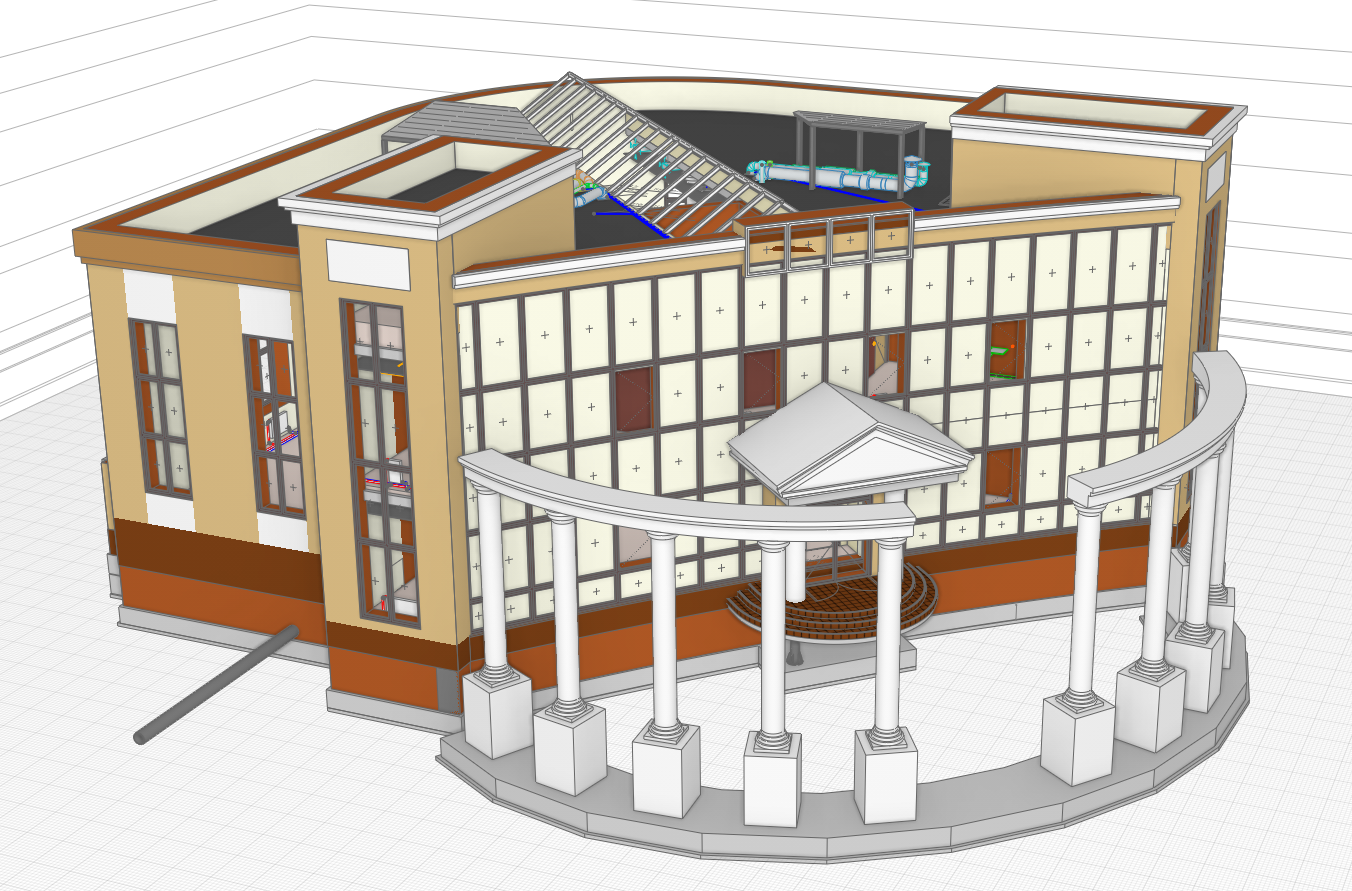
Рис. 1. Цифровая информационная модель в Renga
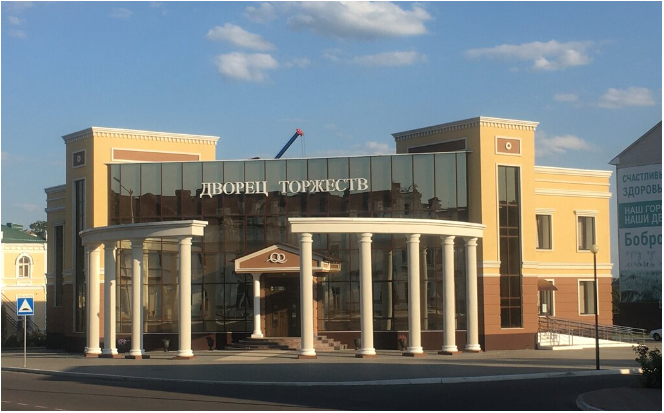
Рис. 2. Здание в г. Бобруйск
В качестве инструмента для поиска коллизий пересечения выбран Pilot-BIM. ЦИМ из Renga была разделена на IFC-модели по разделам, с использованием IFC-маппинга [15, 16], и загружена в Pilot-BIM, список экспортированных IFC-моделей представлен в Таблице 1.
Таблица 1.
Список IFC-моделей
| Наименование IFC-модели | Описание |
| К01_АР_П_Rn52 | ЦИМ архитектуры |
| К01_КР_П_Rn52 | ЦИМ конструктива |
| К01_ВК_П_Rn52 | ЦИМ вентиляции и кондиционирования |
| К01_ВВ-О_П_Rn52 | ЦИМ водоснабжения, канализации и отопления |
| К01_ЭС-ЭО_П_Rn52 | ЦИМ силовой и осветительной сети |
В проведённом исследовании проверки на коллизии пересечения выполнялись с установленным значением слабых пересечений в 80 единиц, в соответствии с требованиями Московского государственной экспертизы [14]. В рамках исследования выполнено 15 проверок как внутридисциплинарных, так и междисциплинарных, список проверок представлен в Таблице 2.
Таблица 2.
Выполненные проверки
|
№ п/п |
Проверяемые части модели |
Тип |
Количество коллизий пересечения |
|
|
Набор А |
Набор Б |
|||
|
1 |
К01_АР_П_Rn52 |
К01_АР_П_Rn52 |
1 |
86 |
|
2 |
К01_КР_П_Rn52 |
К01_КР_П_Rn52 |
1 |
437 |
|
3 |
К01_ВК_П_Rn52 |
К01_ВК_П_Rn52 |
1 |
11 |
|
4 |
К01_ВВ-О_П_Rn52 |
К01_ВВ-О_П_Rn52 |
1 |
8 |
|
5 |
К01_ЭС-ЭО_П_Rn52 |
К01_ЭС-ЭО_П_Rn52 |
1 |
32 |
|
6 |
К01_АР_П_Rn52 |
К01_ВВ-О_П_Rn52 |
2 |
11 |
|
7 |
К01_АР_П_Rn52 |
К01_ВК_П_Rn52 |
2 |
40 |
|
8 |
К01_АР_П_Rn52 |
К01_КР_П_Rn52 |
2 |
230 |
|
9 |
К01_АР_П_Rn52 |
К01_ЭС-ЭО_П_Rn52 |
2 |
52 |
|
10 |
К01_ВВ-О_П_Rn52 |
К01_ВК_П_Rn52 |
2 |
- |
|
11 |
К01_ВВ-О_П_Rn52 |
К01_КР_П_Rn52 |
2 |
230 |
|
12 |
К01_ВВ-О_П_Rn52 |
К01_ЭС-ЭО_П_Rn52 |
2 |
- |
|
13 |
К01_ВК_П_Rn52 |
К01_ЭС-ЭО_П_Rn52 |
2 |
- |
|
14 |
К01_КР_П_Rn52 |
К01_ВК_П_Rn52 |
2 |
50 |
|
15 |
К01_КР_П_Rn52 |
К01_ЭС-ЭО_П_Rn52 |
2 |
47 |
|
Всего: |
1234 |
|||
|
Примечания:
|
||||
В качестве метода сортировки принят метод сортировки по назначенному весу коллизии, в зависимости от элемента, участвующего в каждой конкретной коллизии в каждой проведённой проверке. Значение весов для элементов ЦИМ представлено Таблице 3.
Таблица 3.
Значение весов
|
№ п/п |
Элемент |
Удовлетворяющие IFC-классы |
Вес |
|
1 |
Перекрытие |
IfcSlab |
12 |
|
2 |
Колонна |
IfcColumn |
10 |
|
3 |
Балка |
IfcBeam |
8 |
|
4 |
Проём |
IfcWindow, IfcDoor |
7 |
|
5 |
Инженерное оборудование |
IfcPump, IfcSanitoryTerminal |
7 |
|
6 |
Стена |
IfcWall |
5 |
|
7 |
Воздуховод |
IfcDuctSegment, IfcDuctFitting |
5 |
|
8 |
Труба |
IfcPipeSegment, IfcPipeFitting |
5 |
|
9 |
Кабель |
IfcCableSegment |
1 |
|
10 |
Перемычка |
IfcPlate |
1 |
Каждая коллизия в проверках приведённых в Таблице 2 состоит из двух элементов, которые пересекаются между собой. Если первый и/или второй элемент коллизии является одним из элементов в Таблице 3, коллизии назначается соответствующий вес, если элементы в коллизии удовлетворяют нескольким условиям, то веса суммируются. Например, коллизия IfcSlab–IfcColumn имеет суммарный вес 12+10=22, коллизия IfcWall–IfcCableSegment имеет суммарный вес 5+1=6.
Результаты исследований
Таким образом, назначив суммарные веса всем 1234 коллизиям (Таблица 2), они были отсортированы, результат сортировки представлен на Рис. 3.
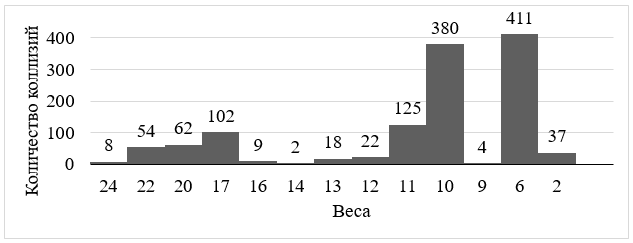
Рис. 3. Отсортированные коллизии пересечения
По полученным данным видно, что пиковые значения принимают коллизии с весами 10 и 6, они же составляют большую часть всех коллизий 64,1% (791 шт.). По закону Парето (принцип 80/20), 20% коллизий с высоким весом наиболее важны с точки зрения эффективного использования трудовых ресурсов. Коллизии с весами 24-13 составляют 20,67% (255 шт.) от общего числа коллизий, на их решение и необходимо сконцентрировать усилия инженеров.
В 20,67% коллизий (веса 24-13) в основном попали элементы несущих конструкций, меньшую часть занимают элементы инженерных систем.
В 64,1% коллизий (веса 10 и 6) в подавляющей части состоят из коллизий стен с другими стенами и стен с элементами инженерных систем.
Оставшиеся 15,23% коллизий (веса 12, 11, 9, 5 и 2) в основном состоят из архитектурных элементов и коллизий с участием перемычек.
Коллизии внутри одного веса можно отсортировать по объёму тела пересечения (в данном исследовании не выполнялось). В итоге образуется двухуровневая сортировка, на первом уровне по суммарному весу, на втором по объёму тела пересечения, что делает сортировку ещё более релевантной.
Выводы
Таким образом используя метод сортировки коллизий назначив веса элементам можно повысить производительность труда квалифицированных инженеров за счёт рационального использования трудовых ресурсов.
Наибольшее количество коллизий (веса 10 и 6) состоят из пересечения стен со стенами, из этого можно сделать вывод, что инструмент, с помощью которого моделируются стены используется некорректно, вероятно есть дублирование элементов.
Значение слабых пересечений в 80 единиц в перспективе может быть уменьшено, тем самым условия проверки станут жёстче, коллизий пересечения станет больше, качество ЦИМ вырастет после их исправления.
Значения весов в данном исследовании назначены исходя из того, что несущие элементы имеют больший приоритет, в общем случае в каждой конкретной организации веса могут быть индивидуальными в зависимости от приоритета каждой конкретной организации и распределение элементов по весам будет другим.
В качестве дальнейших исследований можно определить веса для большинства элементов ЦИМ в разных типах объектов капитального строительства методом экспертной оценки и составить методические рекомендации.
1. Zakharova, Yu., Shishkina M. Automatic collision checks in Pilot-BIM / CAD and graphics. - 2021. - № 6(296). - Pp. 30-36. EDN: https://elibrary.ru/NQPPDK
2. How BIM helps to identify collisions: the experience of Renault systems users // CAD and graphics. - 2022. - № 6(308). - Pp. 14-17.
3. Subbotina, M. Russian BIM technologies: Cadlib Model and archive as a BIM manager tool // CAD and Graphics. - 2022. - № 1(303). - Pp. 41-45. EDN: https://elibrary.ru/WTFNYE
4. Alieva, D.N. Development of an algorithm for finding collisions when building a bim model // Construction - formation of the life environment: XXI International Scientific Conference: collection of materials of the seminar "Youth innovations", Moscow, April 25-27, 2018. - Moscow: National Research Moscow State University of Civil Engineering, 2018. - Pp. 8-10. EDN: https://elibrary.ru/USLUBL
5. Alieva, D.N. Automation of collision search in the construction of a BIM model // Days of student science : collection of reports of a scientific and technical conference on the results of research work of students of the Institute of Economics, Management of Information Systems in Construction and Real Estate of the NRU MGSU for the 2017-2018 academic year, Moscow, March 12-16 2018 / Ministry of Education and Science of the Russian Federation, National Research Moscow State University of Civil Engineering; editorial board: Volkov, A.V. Ginzburg, Verstina,A.D. Ishkov, O.N. Kuzina, D.N. Silka, P.G. Grabovoi. - Moscow: National Research Moscow State University of Civil Engineering, 2018. - Pp. 323-325. EDN: https://elibrary.ru/XSYKUP
6. Remmelg, Ya.A., Shiyanov, M.A., Kucherenko, A.S. Automated collision checks in the Pilot-BIM program // Education. Sciences'. Production: collection of reports of the XIV International Youth Forum, Belgorod, October 13-14, 2022. - Belgorod: Belgorod State Technological University named after V.G. Shukhov, 2022. - Pp. 223-227.
7. Lopukhina, V. P. The concept of BIM technology in design, or technology in BIM design / V. P. Lopukhina, E. A. Mikhaleva // XVI Annual scientific session of graduate students and young scientists: materials of the All-Russian Scientific Conference. In 3 volumes, Vologda, November 29, 2012 / Editor-in-chief M.M. Karaganova. Volume 1. - Vologda: Vologda State University, 2023. - Pp. 189-191. EDN: https://elibrary.ru/IZJDCK
8. Yudaeva, D. E. BIM technologies and expertise of project documentation / D. E. Yudaeva // materials of the All-Russian Scientific and practical Conference of graduate students, doctoral students and young scientists, Maykop, April 15-17, 2020 / Ministry of Science and Higher Education of the Russian Federation, Federal State Budgetary Educational Institution of Higher Education "Maykop State Technological University". - Maikop: Maikop State Technological University, 2020. - Pp. 69-73. EDN: https://elibrary.ru/IRWTCU
9. Chervova, N. A. Collisions of engineering systems when designing on BIM platforms / N. A. Chervova, D. O. Lepeshkina / / construction of unique buildings and structures. - 2018. - № 3(66). - Pp. 19-29. - DOIhttps://doi.org/10.18720/CUBS.66.2. EDN: https://elibrary.ru/XTYVNZ
10. Chervova, N. A. Tools for finding collisions of engineering systems when working on BIM platforms / N. A. Chervova, D. O. Lepeshkina / / scientific community of students of the XXI century. Technical sciences: electronic collection of articles based on the materials of the XXIV International student scientific and practical conference. Volume 4 (63): Association of Researchers "Siberian Academic Book", 2018. - Pp. 22-29. EDN: https://elibrary.ru/XONKXJ
11. Kochkareva, M. B. Advantages of BIM technologies in solving problematic issues of renovation and reconstruction of engineering networks / M. B. Kochkareva / / Innovative methods of organizing construction production : materials of the II All-Russian Scientific and Practical Conference, St. Petersburg State University of Architecture and Civil Engineering, November 17-18, 2022 / St. Petersburg State University of Architecture and Civil Engineering. -Saint Petersburg: Saint Petersburg State University of Architecture and Civil Engineering, 2023. - pp. 126-131. EDN: https://elibrary.ru/ZRIJDW
12. Ivanov, A. Yu. BIM-models: the fight against collisions in the design of engineering systems. Yu. Ivanov, V. A. Livanov / / auto: ventilation, heating, air conditioning, heat supply and construction thermophysics. - 2023. - No. 5. - Pp. 52-64. EDN: https://elibrary.ru/YJRKUS
13. Kurasov, M. V. Management of building engineering networks using a BIM model / M. V. Kurasov, D. R. Islamgalieva, R. K. Nurislamova / / actual problems of technical, natural and humanitarian sciences: materials of the International Scientific and Technical Conference, Ufa, October 29, 2021. - Ufa: USPTU Publishing House, 2021. - Pp. 17-21. EDN: https://elibrary.ru/NPZCBO
14. Requirements for information models of capital construction projects. Part 1 General requirements for digital information models of buildings for examination when using information modeling technologies. Revision 4.1. [Electronic resource] - 2020 - URL: https://www.mos.ru/mke/documents/prikazy/view/244254220 / (accessed 31.08.2023);
15. Ostashev, R.V. Evtushenko, S.I. Development of IFC mapping for loading information models of architectural solutions // Construction and architecture. - 2022. - Vol. 1. 10, No. 2. - Pp. 91-110. - DOIhttps://doi.org/10.29039/2308-0191-2022-10-2-91-110. (In Russian). EDN: https://elibrary.ru/YADGFT
16. Ostashev R.V., Evtushenko S.I. Analysis of a plug-in for communication of building information models Direct Link // Information technologies in the survey of operated buildings and structures: materials of the XIX International Scientific and Technical conf., Novocherkassk 22-23 oct. 2020./ Platov South-Russian state polytechnic university (NPI).- Novocherkassk: Lik Publ., 2020.- Pp. 9-13. (In Russian) EDN: https://elibrary.ru/NLOBBJ
17. Shilov L., Evtushenko S., Arkhipov D., Shilova L. The prospects of information technology using for the analysis of industrial buildings defects / VII International Scientific Conference “Integration Partnership and Innovation in Construction Science and Education” (IPCSE 2020) 11th -14th November 2020, Tashkent, Uzbekistan // (2021) IOP Conf. Series: Materials Science and Engineering 1030 (1) 012039. doihttps://doi.org/10.1088/1757-899X/1030/1/012039 EDN: https://elibrary.ru/MCKZLG
18. Evtushenko S.I., Shilova L.A., Ulesikova E.S., Kuchumov M.A. Information modeling of a subway tunnel with anti-vibration measures // Science and busines : development ways, 2019, Issue 10 (100), Pp. 29-35. (In Russian)
19. Shutova M.N., Varenica A.P., Evtushenko S.I., Podekrebalin A.S. Application of the 3D scanning method when performing measurement works of industrial and non-industrial objects // Construction and architecture. - 2022. - vol. 10, Issue 2 (35). - Pp. 76-80. doi:https://doi.org/10.29039/2308-0191-2022-10-2-76-80 (In Russian) EDN: https://elibrary.ru/NYAEVM
20. Puchenkov I.S., Evtushenko S.I. Creating an information model of a building in a shared data environment // Construction and architecture. - 2021. - Vol/ 9, Issue 1 (30). - Pp. 46-50. doi:https://doi.org/10.29039/2308-0191-2021-9-1-46-50 (In Russian) EDN: https://elibrary.ru/PBMPCM
21. Evtushenko S.I., Fetter M.A. Problems of application of automatic placement of elements in the construction of an information model of pipeline systems of a building based on point clouds // Construction and architecture. - 2022. - Vol. 10, Issue 2 (35). - Pp. 71-75. doi:https://doi.org/10.29039/2308-0191-2022-10-2-71-75 (In Russian) EDN: https://elibrary.ru/NVEZMF
22. Ulanov A.V., Yevtushenko S.I. Problems and solutions of using BIM technologies in window design // In the collection: BIM modeling in construction and architecture tasks. Materials of the III International Scientific and Practical Conference. 2020. Pp. 286-295. DOI: https://doi.org/10.23968/BIMAC.2020.037; EDN: https://elibrary.ru/JUIDMS
23. Evtushenko S.I., Krahmalny T.A., Lepikhova V.A., Kuchumov M.A. The information technologies use at difficult technical objects condition control // IOP Conference Series: Materials Science and Engineering. The International Scientific Conference “Construction and Architecture: Theory and Practice for the innovation Development” (CATPID-2019). 2019. P. 066017. doihttps://doi.org/10.1088/1757-899X/698/6/066017 EDN: https://elibrary.ru/ALCJCM
